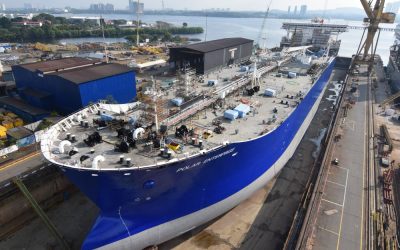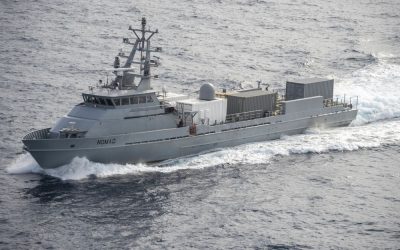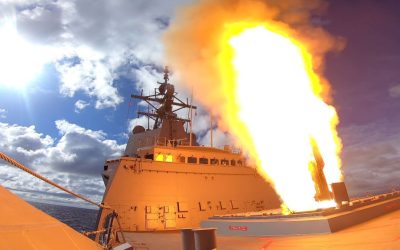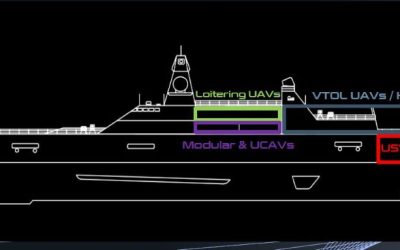Boosting the US Navy’s ability to maintain vessels whilst they are operational was the goal of an exercise that took place off the coast of California from 22 August to 2 September 2022.
The Repair Technology Exercise (REPTX) took place on the US Navy’s Self Defense Test Ship, an asset operated by the Naval Surface Warfare Center, Port Hueneme Division (NSWC PHD). The Self Defense Test Ship is a decommissioned Spruance-class destroyer the US Navy uses to evaluate naval weapons and emerging technology.
REPTX is part of the broader Advanced Naval Technology Exercise-Coastal Trident 2022, which began in June and ran to September and which NSWC PHD conducts field experiments involving emerging technology.
During the exercise, companies and technology suppliers tested products’ ability to tackle real-world fleet maintenance challenges, including assessing and repairing potential battle damage. REPTX also enabled technology to be tested in a number of shipboard scenarios – such as loss of lighting, an unidentified object on the hull, pipe corrosion and leakage, and damage to the ship’s superstructure.
Numerous technical demonstrations and field experiments took place aboard the Self Defense Test Ship during REPTX, providing a unique opportunity to evaluate innovative products and services that could enable crew members to carry out repairs needed to keep them underway.
Participants in REPTX demonstrated technology designed to address four focus areas: visualisation; command and control aids; forward manufacturing; and expeditionary maintenance. Visualisation refers to dynamic inspection methods that enable a ship to see itself and the world around it, above and below the water line. Command and control aids help vessel personnel make rapid, data-driven decisions and real-time situational assessments. Forward manufacturing hubs, such as additive manufacturing or 3D printing systems, reduce ships’ reliance on long-distance supply chains, increasing readiness. Expeditionary maintenance refers to the ability to undertake maintenance operations and battle damage assessment and repair while a ship is deployed.
The Naval Systems Engineering and Logistics Directorate Technology Office (NAVSEA 05T) at the Naval Sea Systems Command (NAVSEA) said it selected a total of 65 technologies to take part in the event. These included unmanned aerial vehicles and submersibles, additive manufacturing equipment, ship-to-shore communication systems, inspection and repair tools, and above- and below-water visualisation devices. It was assisted in the selection process by the National Center for Manufacturing Sciences (NCMS), which helped identify and vet proposals.




